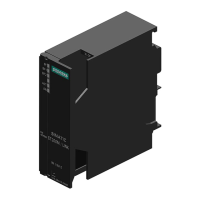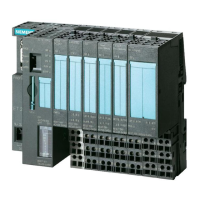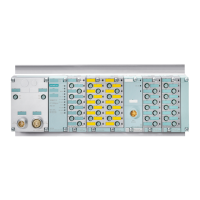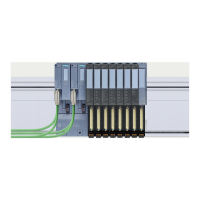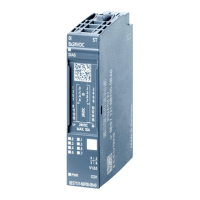4.16 Time stamping
4.16.1 Fundamentals of Time Stamping
Properties
Digital modules of the ET 200iSP enable the "time stamping" function.
• in customer applications using the FB 62 (FB TIMESTMP)
(for more information, see the STEP 7 online help)
• with the PCS 7 system solution with 20 ms accuracy.
You can nd a detailed description of time stamping and time-of-day synchronization in
the PCS 7 function manual "High-precision time stamping".
Operating principle
Time stamping enables the monitoring of digital inputs for signal changes. A changed input
signal is given a time stamp in the interface module and stored in a buer (data record). When
signals with time stamp exist or a data record is full, a hardware interrupt is generated (to the DP
master/to the IO controller). The buer is evaluated with "Read data record". Special alarms are
generated for events that inuence time stamping (communication interrupted, frame failure
from time master, etc.).
Parameter assignment
You use the parameter assignment to specify which payload of the interface module is being
monitored.
Parameter Setting Description
Time stamping
• Disabled
• Enabled
Enable time stamping for the chan‐
nels of the electronic module 8 DI NA‐
MUR.
Edge evaluation incom‐
ing event
• rising edge
• falling edge
Specify the type of signal change that
is given a time stamp.
4.16.2 Time stamps accurate to 20 ms
Introduction
The time stamping of binary signal changes is continuously supported by all hardware and
software components in the PCS 7 system: From the ET 200iSP via the S7‑400 to the OS.
Congurations (principle)
4.16 Time stamping
ET 200iSP
Operating Instructions, 11/2022, A5E00247483-AK 89

